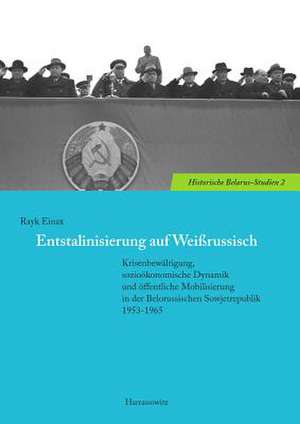Entstalinisierung Auf Weissrussisch: Historische Belarus-Studien, cartea 2
de Limba Germană Paperback
Din seria Historische Belarus-Studien
- 11%
 Preț: 462.85 lei
Preț: 462.85 lei -
 Preț: 384.24 lei
Preț: 384.24 lei -
 Preț: 271.02 lei
Preț: 271.02 lei -
 Preț: 420.40 lei
Preț: 420.40 lei -
 Preț: 379.64 lei
Preț: 379.64 lei -
 Preț: 337.16 lei
Preț: 337.16 lei
Preț: 510.92 lei
Nou
Puncte Express: 766
Preț estimativ în valută:
97.78€ • 101.31$ • 81.60£
97.78€ • 101.31$ • 81.60£
Indisponibil temporar
Doresc să fiu notificat când acest titlu va fi disponibil:
Se trimite...
Preluare comenzi: 021 569.72.76
Specificații
ISBN-13: 9783447102759
ISBN-10: 3447102756
Pagini: 443
Editura: Harrassowitz
Seria Historische Belarus-Studien
ISBN-10: 3447102756
Pagini: 443
Editura: Harrassowitz
Seria Historische Belarus-Studien
